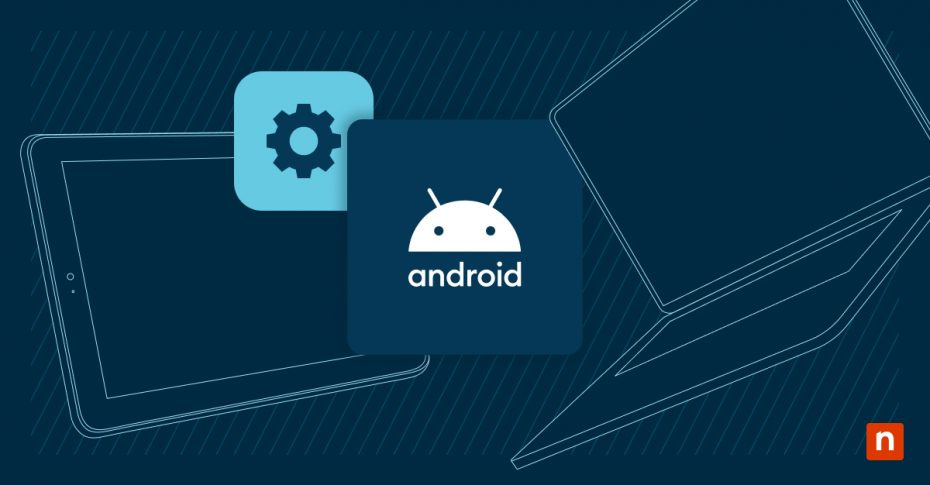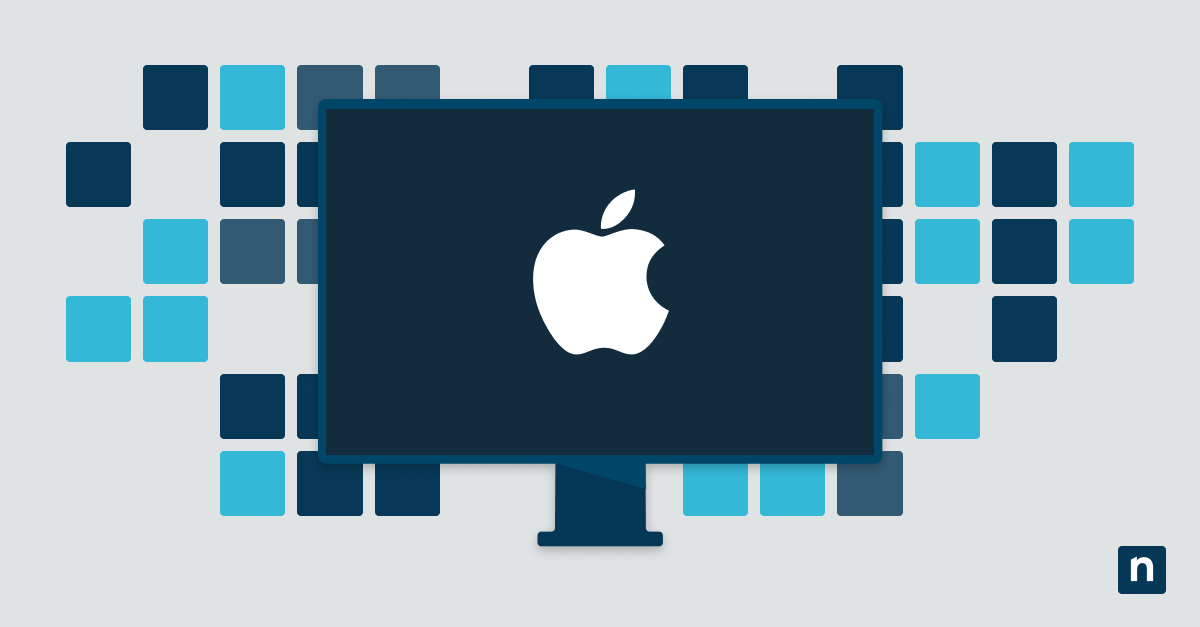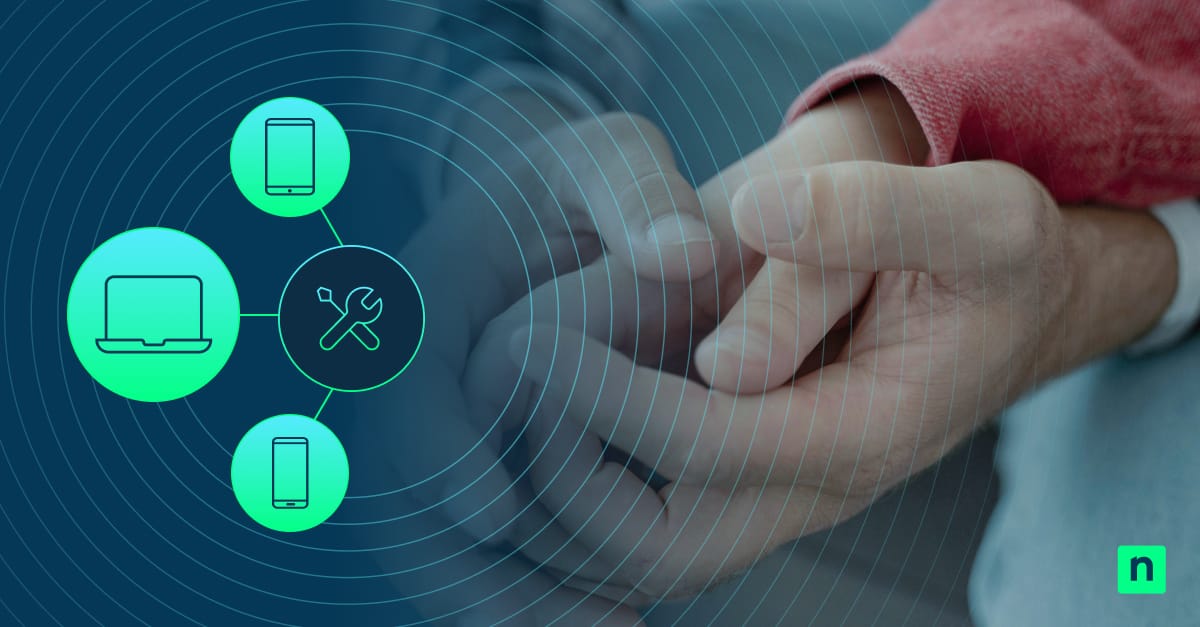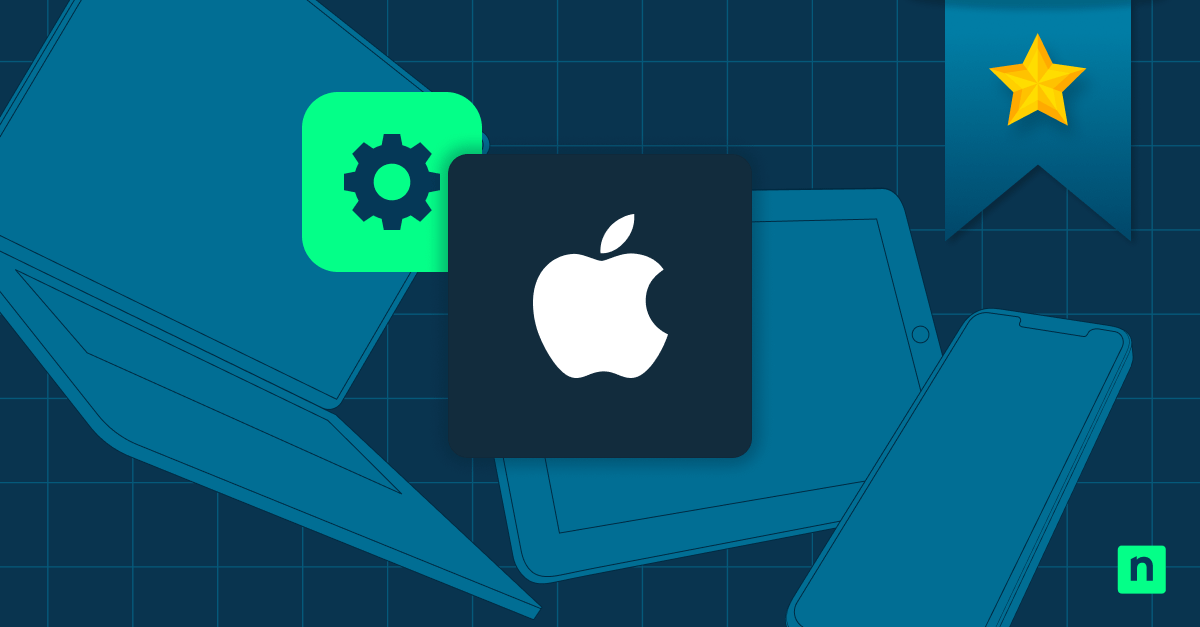Mobile device management (MDM) is software that enables organizations to support, automate, control, and secure mobile devices that are connected to the workplace and that have access to organizational data.
MDM software is needed for each type of operating system because they all function a little differently from one another. Android MDM is software designed specifically for mobile devices that run the Android operating system (OS).
What is Android MDM used for?
Android MDM is used to remotely access, manage, and implement security protocols on Android mobile devices. It gives IT admins the ability to manage applications and configurations, monitor device security and traffic usage of apps, and secure company data. Android MDM is an essential component for enforcing policies, increasing compliance, and protecting company data.
What is Android Enterprise?
Android Enterprise is a Google program that provides APIs and other IT tools to integrate Android into enterprise mobility management (EMM) solutions. It contains a variety of management and security features that developers use for Android devices that enable better management of Android devices within an organization.
EMM is a tool that has slightly different capabilities than MDM, but both are ultimately working toward better management of mobile devices. EEM then evolved into unified endpoint management (UEM), which marries the management of traditional endpoints such as laptops, desktops, virtual machines (VMs), and mobile devices such as tablets and phones.
Why is Android MDM needed for businesses of all sizes?
Simply stated, not all Android devices are the same. Android devices can run on Google Android or the Android Open Source Project without Google Mobile Services. Additionally, Android devices are typically designed for personal use and may not be fully optimized for corporate purposes.
If you’re a company implementing BYOD policies, you may find the infinite differences perplexing without a comprehensive Android MDM. Thus, it would be wise to deploy an Android MDM to make your team members’ Android devices business-ready.
Is mobile device management only for Android devices?
Android MDM helps organizations effectively manage mobile devices with an Android OS. However, different mobile devices can run on other types of systems, which is why other types of MDM software, such as Windows MDM and Apple MDM, have been created.
If your organization’s IT environment contains multiple operating systems, finding a third-party vendor that provides MDM software is an effective solution. These MDM solutions enable you to support heterogeneous environments and device types.
9 main functions/features of Android MDM
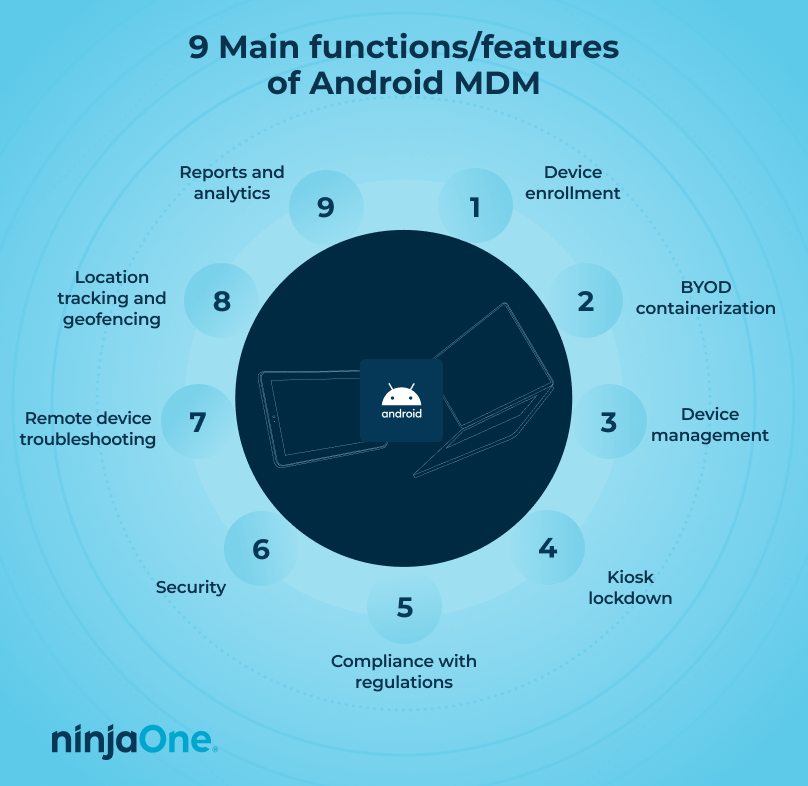
Android MDM contains multiple key functions and features, including:
Device enrollment
There are different methods for Android enrollment, from sending an enrollment message through email or text message, using QR codes, or utilizing zero-touch enrollment (available with Android Enterprise). Near field communication (NFC), another enrollment method, can also be used for bulk enrollment of Android devices. The specific enrollment options available depend on what your Android MDM solution can support.
It’s worth noting that your IT administrators should also be able to configure Android devices with pre-approved apps so your team members can immediately use their devices.
BYOD containerization
While BYOD offers multiple benefits for remote workers, these policies also come with their own set of challenges, including compliance issues and an increased risk of data breaches.
Android MDMs typically offer containerization, which creates separate containers for work and personal use on BYOD devices. This way, your team members do not have to buy and carry multiple devices for work. Having their work and personal profiles separate also prevents them from inadvertently becoming an insider threat and copying sensitive corporate data on their personal device. Additionally, in case an employee leaves your company, you can easily remove corporate data from their phones without compromising their personal information.
Device management
Android MDM enables IT admins to manage Android devices effectively in the workplace. One component of device management is configuration management, to ensure that all mobile device systems are set up correctly. Application management within the Android MDM software also gives your organization the power to control when apps are deployed, secured, and updated.
Work profiles can also be created, which keep business data and personal data separate on a single device. This partition allows personal information to remain private and work data to be securely separated.
Kiosk lockdown
The average worker spends four hours weekly just toggling between apps (Harvard Business Review). This does not account for the number of minutes spent on unnecessary apps during work hours or the time employees need to “get back in the zone” after using them.
Android MDMs offer a kiosk lockdown feature to prevent employees from accessing non-work-related apps and websites during work. This feature can also convert a device into a more purpose-built kiosk to make it less stressful for your employees as they work.
Compliance with regulations
User compliance with mobile devices is difficult, if not impossible, to enforce without an MDM solution. Through the MDM software, you can implement organizational policies to make certain that your business’s IT environment is compliant with your industry’s regulations. Android MDM software can also generate reports on the device overall or on specific requirements to prove compliance.
Security
The security of a business’s IT environment is a top concern, and Android MDM gives IT teams the software tools needed to secure devices and protect the data on those devices. MDM security policies also provide information for users to know how to secure their mobile devices, and Android MDM software helps to enforce those security policies. Creating an MDM strategy will allow you to effectively use the MDM solution to protect data and increase security.
Remote device troubleshooting
All Android MMD software solutions should offer remote support and troubleshooting features to be more convenient and accessible for hybrid workplaces. This allows your IT administrators to manage Android devices from anywhere in the world and ensure they are performing optimally.
Location tracking and geofencing
Android MDM platforms typically offer location tracking and geofencing to locate lost devices. However, geofencing may also be used for more effective IT management, as it creates virtual boundaries for your business. Essentially, geofencing locks Android devices within a digital (“geographical”) fence. Automated alerts are generated if a device moves in or out of this fence. By being notified immediately of such a movement, you can provide more proactive IT support and immediately lock devices.
Reports and analytics
Endpoint reports give you visibility into your IT network and can contribute to your operational efficiency. An Android MDM should provide a comprehensive summary of all your endpoints, including the device’s overall health and performance. This allows you to pinpoint any discrepancies and possible threat opportunities.
Benefits of using Android MDM
Device visibility
Any device that is enrolled is supported and controlled in your Android MDM software can be seen in the MDM platform. Information from the device is sent to the MDM platform, which gives you the necessary information to take action for protecting mobile devices in your organization and your organization’s data. The increased device visibility that is offered through Android MDM ultimately gives greater control over devices, and you can rest assured that your IT environment is well-protected.
IT efficiency
Android MDM offers IT administrators a centralized platform for managing Android mobile devices. From this single platform, they can monitor mobile devices, enforce policies, set configurations, and deploy applications to multiple Android devices without the need to manually manage each device.
Privacy and work data
Android MDM separates work data and applications from personal data using work profiles and containerization, which segregates personal and corporate data using a logical container. This container helps increase corporate security and management capabilities and ensures user privacy.
Scalability
Android MDM solutions are designed to scale with your organization. Using the MDM solution, you can manage large groups of devices or distribute applications to all designated devices. It also offers a way to manage the devices in your business more granularly as your business grows.
NinjaOne offers Android MDM from a single pane of glass
MDM software is an increasingly essential component of effective device management in business environments. Android MDM software, in particular, is necessary for any mobile device running the Android OS. Along with Android mobile devices, there are multiple types of endpoints to manage within an IT environment.
Increasing device visibility and management is critical to protect your organization’s data, which is why RMM and MDM solutions that are used together can offer better management and protection. UEM, which allows you to manage all devices from a single pane of glass, is an ideal solution.
Learn more about NinjaOne Android MDM Software or sign up for a free MDM trial.
Frequently Asked Questions (FAQs)
1 What is Android mobile device management?
Android mobile device management, or Android MDM, is software that allows you to monitor, manage, and secure your Android devices. It is a subset of the overarching MDM platform that focuses on mobile devices.
2. What is the cost of Android MDM?
The cost of Android MDM is similar to the general cost of an MDM solution. IT enterprises looking for an Android MDM need to consider several factors in their IT budget, from the scale of device management to feature sets and customization options.
3. How do you set up an Android MDM?
Setting up an Android MDM is similar to any MDM solution. First, IT administrators need to enroll devices in the MDM and then configure them with appropriate policies. Depending on the wishes of upper management, consider additional steps, such as setting up geofencing or implementing several authentication methods.

